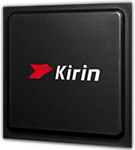
Qualcomm Snapdragon 7 Gen 1 Benchmark, Test and specs
Last updated:
The Qualcomm Snapdragon 7 Gen 1 has 6 CPU cores and can process 6 threads at the same time. The processor was presented in Q2/2022 and is based on the 1. Generation of the Qualcomm Snapdragon series. In the Geekbench 5 benchmark, the Qualcomm Snapdragon 7 Gen 1 achieved a result of 788 points (single-core) or 2,932 points (multi-core).

| Name: | Qualcomm Snapdragon 7 Gen 1 |
|---|---|
| Family: | Qualcomm Snapdragon (102) |
| CPU group: | Qualcomm Snapdragon 7/8 Gen 1 (3) |
| Architecture: | Cortex-X2 / -A710 / -A510 |
| Segment: | Mobile |
| Generation: | 1 |
| Predecessor: | -- |
| Successor: | Qualcomm Snapdragon 7+ Gen 2 |
CPU Cores and Base Frequency
The Qualcomm Snapdragon 7 Gen 1 has 6 cores. The clock frequency of the Qualcomm Snapdragon 7 Gen 1 is 2.40 GHz. An initial performance assessment can be made using the number of CPU cores.
| CPU Cores / Threads: | 6 / 6 |
|---|---|
| Core architecture: | hybrid (Prime / big.LITTLE) |
| A-Core: | 1x Kryo 710 Prime |
| B-Core: | 3x Kryo 710 Gold |
| C-Core: | 3x Kryo 510 Silver |
| Hyperthreading / SMT: | No |
|---|---|
| Overclocking: | No |
| A-Core Frequency: | 2.40 GHz |
| B-Core Frequency: | 2.36 GHz |
| C-Core Frequency: | 1.80 GHz |
Internal Graphics
The Qualcomm Snapdragon 7 Gen 1 has an integrated graphics that the system can use to efficiently play back videos. The Qualcomm Snapdragon 7 Gen 1 has the Qualcomm Adreno 644 installed, which has -- streaming multiprocessors (-- shaders).
| GPU name: | Qualcomm Adreno 644 |
|---|---|
| GPU frequency: | 0.44 GHz |
| GPU (Turbo): | 0.44 GHz |
| Compute units: | -- |
| Shader: | -- |
| Hardware Raytracing: | No |
| Release date: | Q2/2021 |
| Max. displays: | 1 |
|---|---|
| Generation: | -- |
| Direct X: | 12.0 |
| Technology: | 4 nm |
| Max. GPU Memory: | -- |
| Frame Generation: | No |
Hardware codec support
Processors with integrated graphics can process video codecs faster. Support for modern codecs can significantly increase system efficiency during video playback.
| h265 / HEVC (8 bit): | Decode / Encode |
|---|---|
| h265 / HEVC (10 bit): | Decode / Encode |
| h264: | Decode / Encode |
| VP8: | Decode / Encode |
| VP9: | Decode / Encode |
| AV1: | No |
|---|---|
| AVC: | Decode |
| VC-1: | Decode |
| JPEG: | Decode / Encode |
Memory & PCIeThe Qualcomm Snapdragon 7 Gen 1 supports a maximum of 16 GB memory. Depending on the mainboard, the processor can use a maximum of 2 (Dual Channel) memory channels. This results in a maximum bandwidth of the main memory of 102.4 GB/s. |
|
| Memory type: | Memory bandwidth: |
|---|---|
| LPDDR5-6400 | 102.4 GB/s |
| Max. Memory: | 16 GB |
| Memory channels: | 2 (Dual Channel) |
| ECC: | No |
| PCIe: | |
| PCIe Bandwidth: | -- |
Thermal ManagementThe Qualcomm Snapdragon 7 Gen 1 has a TDP of 8 W. Based on the TDP, the system manufacturer can and must adapt the cooling solution to the processor. |
|
|---|---|
| TDP (PL1 / PBP): | 8 W |
| TDP (PL2): | -- |
| TDP up: | -- |
| TDP down: | -- |
| Tjunction max.: | -- |
Technical details
Modern production reduces the waste heat of a processor and increases its efficiency. The Qualcomm Snapdragon 7 Gen 1 is made in 4 nm and has 3.00 MB cache.
| Technology: | 4 nm |
|---|---|
| Chip design: | Chiplet |
| Socket: | -- |
| L2-Cache: | 3.00 MB |
| L3-Cache: | -- |
| AES-NI: | No |
| Operating systems: | Android, Windows 10 (ARM) |
| Virtualization: | None |
|---|---|
| Instruction set (ISA): | Armv9-A (64 bit) |
| ISA extensions: | -- |
| Release date: | Q2/2022 |
| Release price: | -- |
| Part Number: | SM7450-AB |
| Documents: | Technical data sheet |
Rate this processor
Benchmark results

The benchmark results for the Qualcomm Snapdragon 7 Gen 1 have been carefully checked by us. We only publish benchmark results that have been created by us or that have been submitted by a visitor and then checked by a team member. All results are based on and fullfill our benchmark guidelines.
Geekbench 5, 64bit (Single-Core)
Geekbench 5 is a cross plattform benchmark that heavily uses the systems memory. A fast memory will push the result a lot. The single-core test only uses one CPU core, the amount of cores or hyperthreading ability doesn't count.

|
Intel Core i5-4210M
2C 4T @ 3.20 GHz |
||

|
Intel Core i5-4460S
4C 4T @ 3.40 GHz |
||
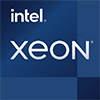
|
Intel Xeon E5-2670 v3
12C 24T @ 3.10 GHz |
||
|
|
Qualcomm Snapdragon 7 Gen 1
6C 6T @ 2.40 GHz |
||
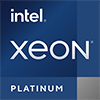
|
Intel Xeon Platinum 8153
16C 32T @ 2.80 GHz |
||

|
Intel Xeon E5-2630L v3
8C 16T @ 2.90 GHz |
||

|
Intel Core i7-4720HQ
4C 8T @ 3.60 GHz |
||
Geekbench 5, 64bit (Multi-Core)
Geekbench 5 is a cross plattform benchmark that heavily uses the systems memory. A fast memory will push the result a lot. The multi-core test involves all CPU cores and taks a big advantage of hyperthreading.

|
Intel Core i3-9100E
4C 4T @ 3.40 GHz |
||

|
Intel Core i7-3615QE
4C 8T @ 2.30 GHz |
||

|
Intel Core i5-7440EQ
4C 4T @ 2.90 GHz |
||
|
|
Qualcomm Snapdragon 7 Gen 1
6C 6T @ 2.40 GHz |
||
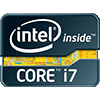
|
Intel Core i7-3820QM
4C 8T @ 2.70 GHz |
||

|
Intel Xeon Bronze 3104
6C 6T @ 1.70 GHz |
||

|
Google Tensor
8C 8T @ 2.80 GHz |
||
AnTuTu 9 Benchmark
The AnTuTu 9 benchmark is very well suited to measuring the performance of a smartphone. AnTuTu 9 is quite heavy on 3D graphics and can now also use the "Metal" graphics interface. In AnTuTu, memory and UX (user experience) are also tested by simulating browser and app usage. AnTuTu version 9 can compare any ARM CPU running on Android or iOS. Devices may not be directly comparable when benchmarked on different operating systems.
In the AnTuTu 9 benchmark, the single-core performance of a processor is only slightly weighted. The rating is made up of the multi-core performance of the processor, the speed of the working memory, and the performance of the internal graphics.
In the AnTuTu 9 benchmark, the single-core performance of a processor is only slightly weighted. The rating is made up of the multi-core performance of the processor, the speed of the working memory, and the performance of the internal graphics.

|
Qualcomm Snapdragon 855 Plus
8C 8T @ 2.96 GHz |
||
|
|
HiSilicon Kirin 990 5G
8C 8T @ 2.86 GHz |
||

|
Qualcomm Snapdragon 860
8C 8T @ 2.96 GHz |
||
|
|
Qualcomm Snapdragon 7 Gen 1
6C 6T @ 2.40 GHz |
||
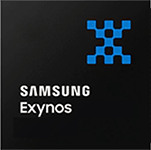
|
Samsung Exynos 1380
8C 8T @ 2.40 GHz |
||

|
MediaTek Dimensity 7030
8C 8T @ 2.50 GHz |
||

|
Qualcomm Snapdragon 778G
8C 8T @ 2.40 GHz |
||
Benchmarks
Popular comparisons
back to index



